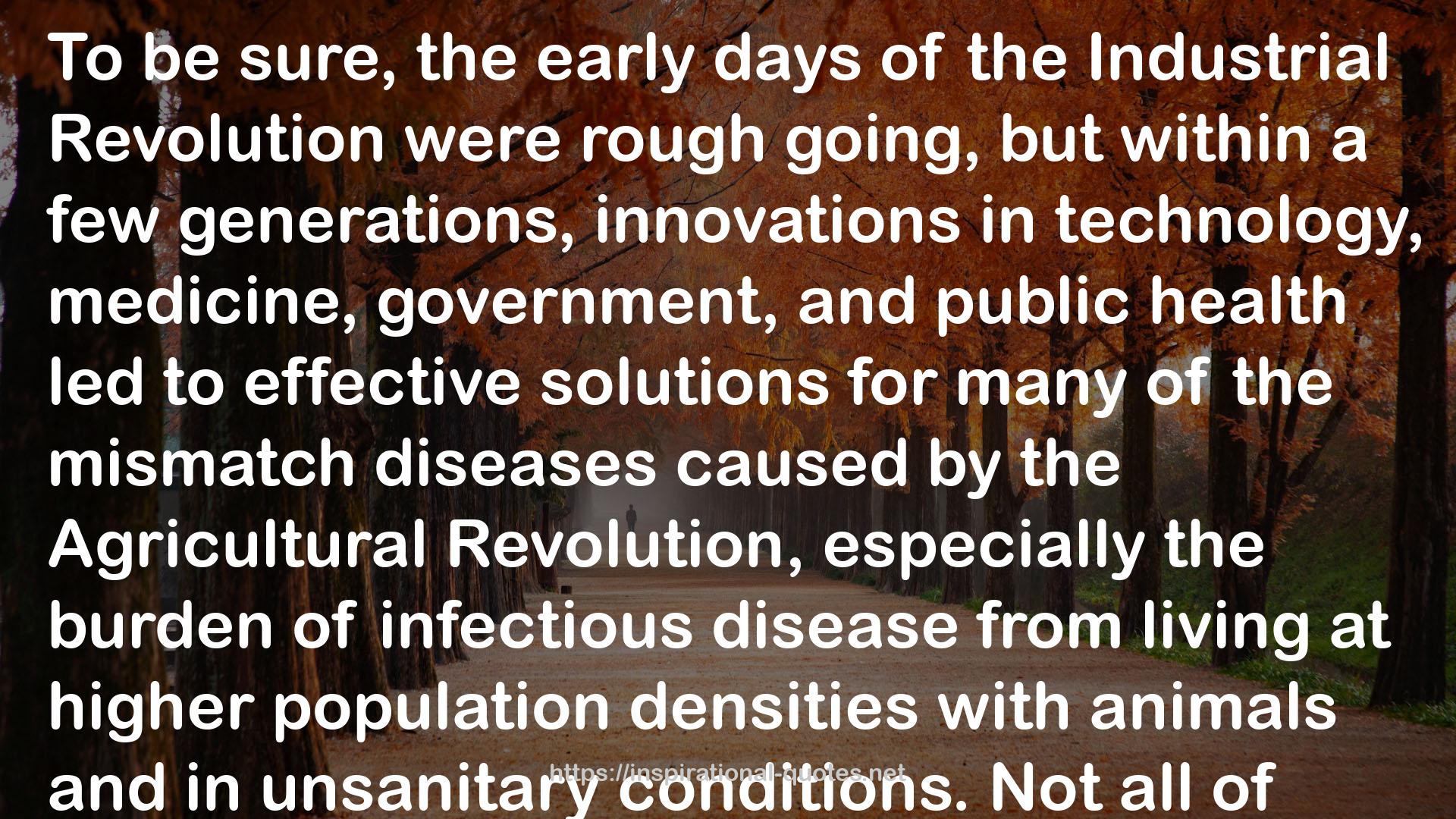" To be sure, the early days of the Industrial Revolution were rough going, but within a few generations, innovations in technology, medicine, government, and public health led to effective solutions for many of the mismatch diseases caused by the Agricultural Revolution, especially the burden of infectious disease from living at higher population densities with animals and in unsanitary conditions. Not all of these advances, however, are available to people unfortunate enough to live in poverty, especially in less developed nations. In addition, the progress made over the last 150 years has also come with some consequential drawbacks for people’s health. Most essentially, there has been an epidemiological transition. As fewer people succumb to diseases from malnutrition and infections, especially when they are young, more people are developing other kinds of noncommunicable diseases as they age. This transition is still ongoing: in the forty years between 1970 and 2010, the percentage of deaths worldwide from infectious disease and malnutrition fell by 17 percent and life expectancy increased by eleven years, while the percentage of deaths from noncommunicable diseases rose by 30 percent.61 As more people live longer, more of them are suffering from disability. In technical terms, lower rates of mortality have been accompanied by higher rates of morbidity (defined as a state of ill health from any form of disease). "
― Daniel E. Lieberman , The Story of the Human Body: Evolution, Health, and Disease
